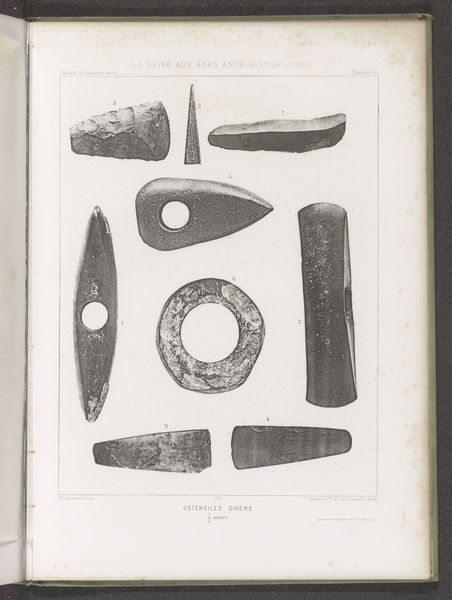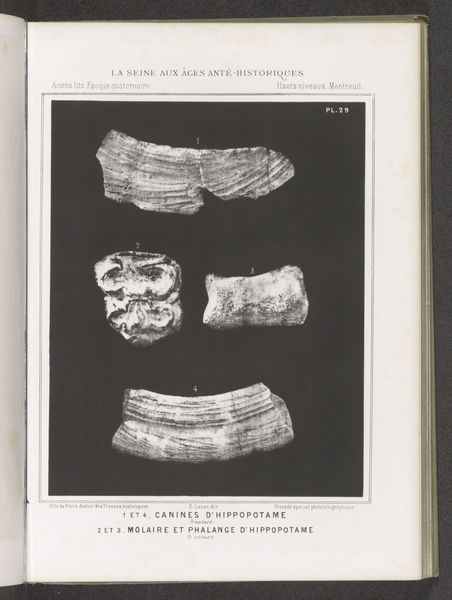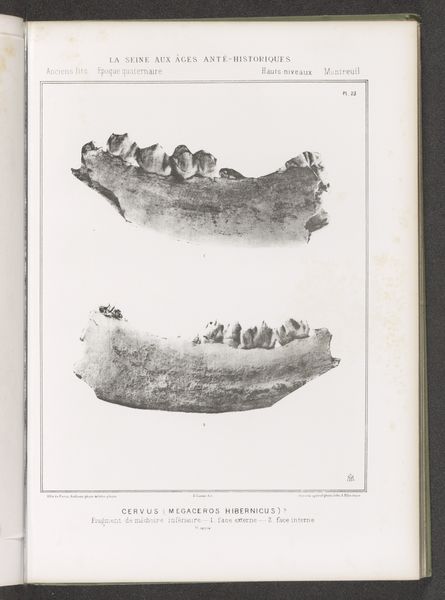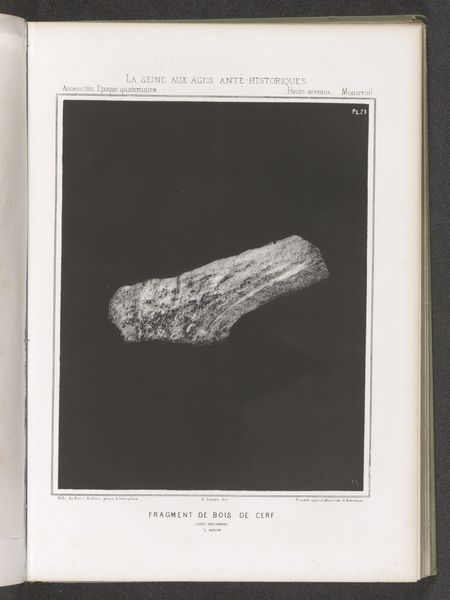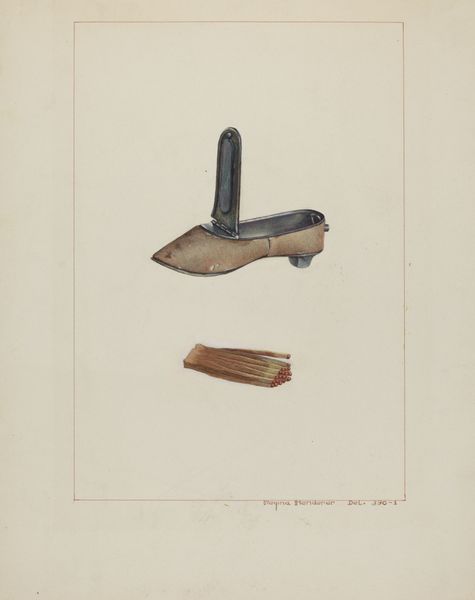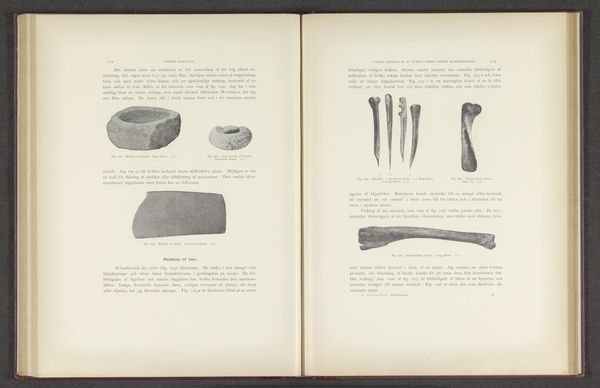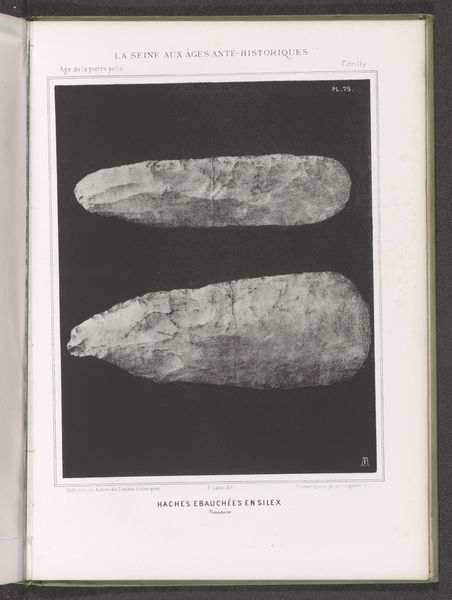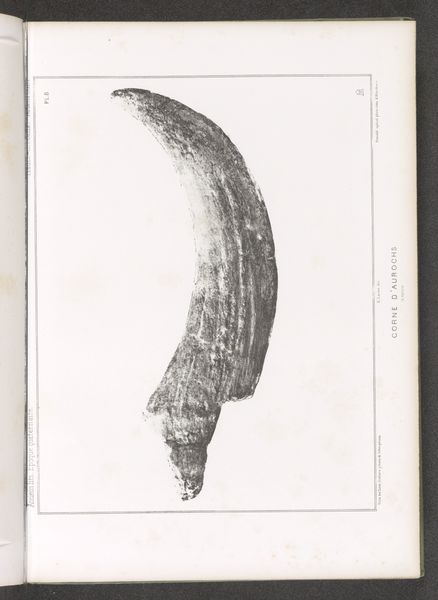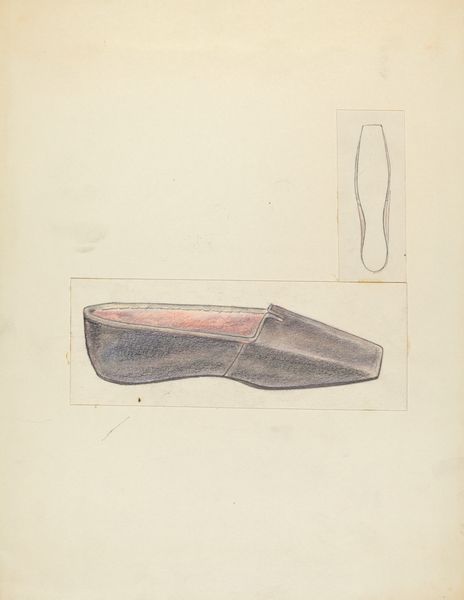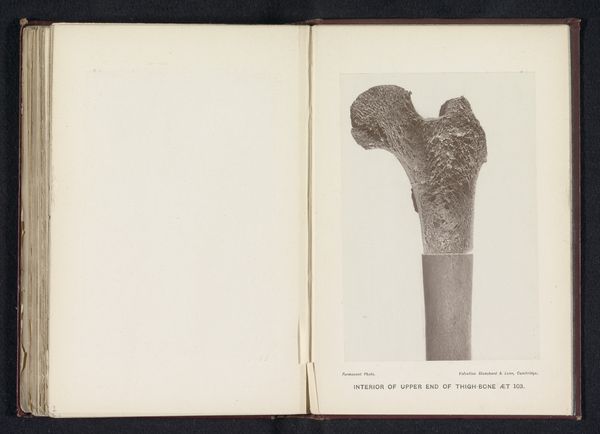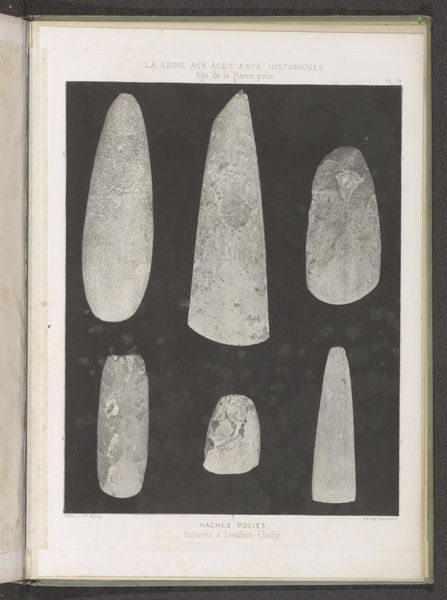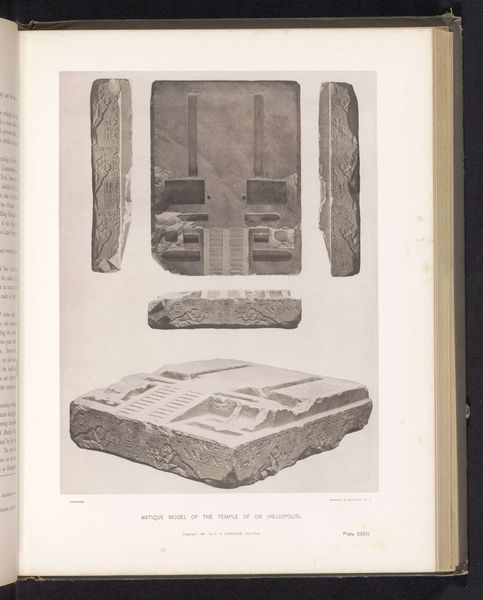
drawing, paper, ink
#
drawing
#
figuration
#
paper
#
ink
#
prehistoric
#
academic-art
Dimensions: height 250 mm, width 190 mm
Copyright: Rijks Museum: Open Domain
Curator: This image, “Twee aanzichten van een vuurstenen bijl gevat in hertenhoorn,” from before 1869, depicts two views of a flint ax encased in antler horn, rendered in ink on paper. Editor: It's fascinating to see the tool depicted in such detail. It makes me think about the human effort to combine these very different materials – stone and bone – to create something functional. How would you analyze this image? Curator: Well, from a materialist perspective, it invites us to consider the entire production process. Think about the extraction of flint, the shaping of the antler, and then the skilled labor needed to assemble these into a functional tool. Where were these materials sourced, and what was the social context surrounding their acquisition and manipulation? The relationship between the object and its value is defined by such steps, don’t you think? Editor: Definitely. The means of production significantly inform value. But looking at it now, it also makes me consider the environmental impact – the consumption of resources required to create even this relatively simple tool. Curator: Exactly! We have to examine the social relations embedded in the materiality. Who had access to these materials? Whose labor went into its production? The drawing itself also represents a form of labor, doesn’t it? Someone had to carefully observe and document this object. Consider how academic conventions play into making an item from Prehistory intelligible, even authoritative. What assumptions do we carry about "primitive" technology, considering it through a drawing like this? Editor: That's an interesting perspective. I hadn't considered the labor involved in representing the artifact itself. It reframes how I perceive the drawing, understanding the social context of how items were categorized. Curator: And that act of categorization speaks volumes about the values of the society creating the documentation. Ultimately, the object's value resides not just in its utility, but in the intricate web of social, economic, and environmental relations it represents. Editor: This really highlights how much there is to unpack even from something that, at first glance, appears like a simple depiction of a tool. Thanks for your perspective.
Comments
No comments
Be the first to comment and join the conversation on the ultimate creative platform.
